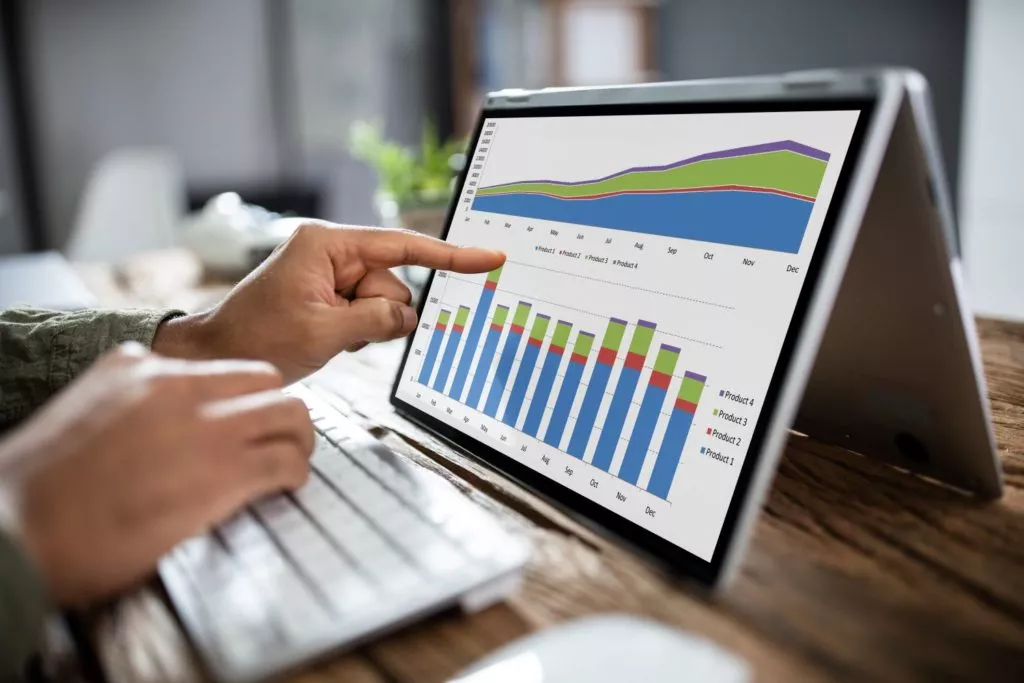Google Signals enhance cross-device tracking in Google Analytics 4 (GA4). It lets you track the number of users instead of devices as they move through the journey of a customer.
As Google shifts away from tracking using cookies These signals could help fill in a data gaps as you move away from Universal Analytics to GA4.
Post Contents
What is Google Signals?
In July 2018, the first time it was announced, Google Signals were launched as an extension for GA4. The newest version Google Analytics steps away from the tracking of individuals’ users. Google Signals is one of the many methods within Google Analytics 4 that enhance cross-device tracking and comply to privacy regulations such as GDPR.
Google Analytics 4 uses a combination of four techniques to integrate data from various session and devices into one user experience.
- ID of the User: allows you to connect your personal identifiers to individuals, so that you can link their behavior across various sessions as well as across various platforms and devices – the most accurate method because it makes use of the information that you gather to identify your users.
- Google signals Gathers information about events from people who have connected to the Google accounts as well as use Ads Personalization enabled and allows you to track these across browsers, devices and other.
- Device-ID It assigns an identification number to the device utilized – capable of monitoring multiple sessions using the same device, but not sessions across different devices.
- Modeling: When users decline Analytics identifiers GA4 makes use of the information of users who accept the Analytics identifiers that they take the Analytics identifiers (from the same application or website) to simulate the behavior of those who refuse.
Each identity space within GA4 comes with each of its advantages and disadvantages. For instance, User-ID is the most reliable method to trace users through the customer journey, however you must obtain the consent of users to comply with privacy laws.
Google Signals don’t require the identical consent settings, but they depend on users being connected to the Google account and being able to use Ads Personalization enabled.
Related: All About Working Of Google Adds
How can I make use of Google Signals?

If Google Signals are available, the existing Google Analytics features are upgraded to incorporate more data provided by Google customers in four major areas:
- Reporting across platforms: Connect data about devices and actions from various sessions with your User-ID or Google Signals data so you can gain a better understanding of the behavior of users at each stage in the process of conversion from the first contact until transformation and on to.
- Remarketing through Google Analytics: Create Remarketing audiences using the data from your Google Analytics data, and connect those audiences to your associated advertising accounts.
- Features for reporting on advertisements: Google Analytics gathers information based on the tracking code configuration you have set in addition to Google Signals data and Google advertising cookies.
- Demographics and Interests Google Analytics gathers additional information on interest and demographics from Device AdvertisingIDs as well as from those who are connected to Google accounts. Google accounts and have enabled Ads Personalization.
In Google’s own words “when users are using Ads Personalization turned on, Google is able to create an overall view of how they interact with an online site using multiple browsers and devices.”
Here are some examples of what you could do make of this information:
- Report on cross-device user accounts: Accurately report on the amount of users rather than devices (including 1-Day, 7 days, 30-Day actives).
- Targeting of the audience: Report and understand various groups of users based on various combinations of devices they use to focus your efforts to the best group of users.
- Analysis of funnels: Understand the customer journey across devices by analyzing reports on the user’s experience (active users funnels, funnels and other routing) which allows you to optimize the user experience throughout the funnel.
- Allocate budgets Review and comprehend cross-device marketing performance and optimize ad spending to the key touch points.
- Cross-device remarketing Create highly relevant ads that are based on cross-device use.
Fundamentally, Google Signals act as an alternative to User-ID in the event that users do not consent to it, which allows you to monitor the users across different devices with anonymized data. However, the caveat that not every user is registered with their Google account across all devices or browsers and not all are using Ads Personalization enabled.
Fortunately, GA4 modelling acts as the second backup if neither Google nor User-ID Signals are in use.
Related: How to Choose The Right Google Ads Agency Nowadays?
Do you think the Google Signals GDPR-compliant?
The simple answer is a resounding yes.
Google Signals use aggregate data which means that personal information is not exposed and anonymised. This puts the technology out of the GDPR regulations, which are designed to protect personal information of individuals.
This being said that using Google Signals still comes with certain privacy concerns. By enabling the feature you sign an agreement with Google which states that you must put all necessary privacy notices in place to make sure that users know that their information is being collected and that they are in agreement with the data being stored, collected and used for marketing purposes.
In addition, the data that is obtained through Google Signals is limited to 26 months, but you are able to alter the retention period to a shorter period of time. No matter if you’re operating ads or planning to launch ads in the beginning, our team is able to provide PPC services to improve your ads performance.
Keep in your mind it is true that Google Analytics 4 is an GDPR-compliant software, but you, the data handler is responsible for storing, collecting and utilizing data according to the GDPR and other privacy rules.
How do I enable Google Signals

It is possible to read the Google’s manual about the activation of Google Signals for a step-by-step guide as well as access to additional information on the program. However, we’ve created an easy set-up guide that is based on Google’s manual to help you get started right here, so that you are able to get started.
In Google Analytics, you can manage multiple accounts, and each account has multiple properties (website storefront, blog mobile app and so on.). In the present Google Signals apply to individual properties, therefore If you own multiple properties in Google Analytics – you need decide which one you want to apply them to.
Do Google Signals useful for SEO?
If you’ve read the details regarding Google Signals The majority of it is related to the additional information you can get to help you with the Google Ads campaigns. But, the cross-device reports are available to every user, regardless of the source or media they utilized (as as they’ve got Ads Personalization enabled), thus, the information is available even if the source was from an organic source. It is basically what you get from the Device Overlap report:
There’s a definite effort to roll out the accessibility of the beta feature to all Google Analytics accounts. It will not be available in the default setting due to the requirement to allow data sharing, and also to ensure your privacy policies are current and if you’re interested in these features, and the data that they provide, it’s going to require manually adjusting.
Read More:










